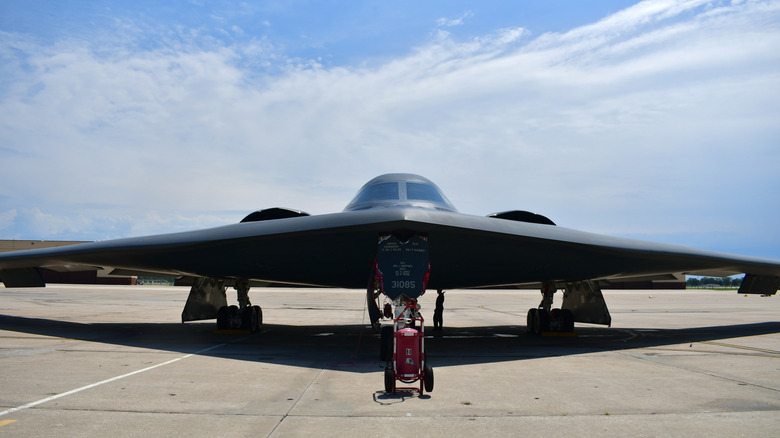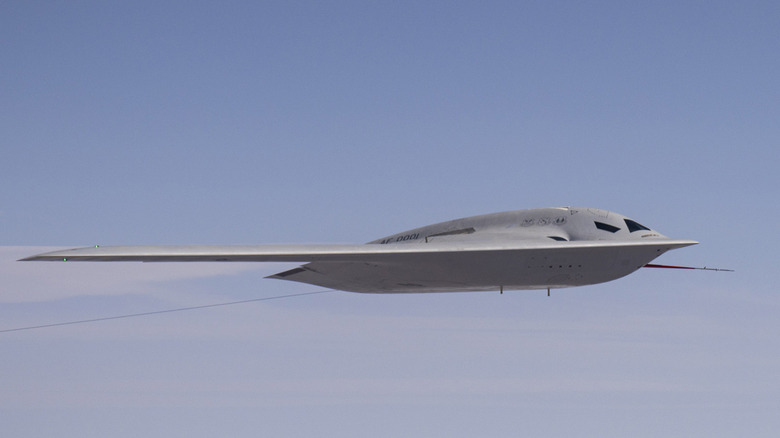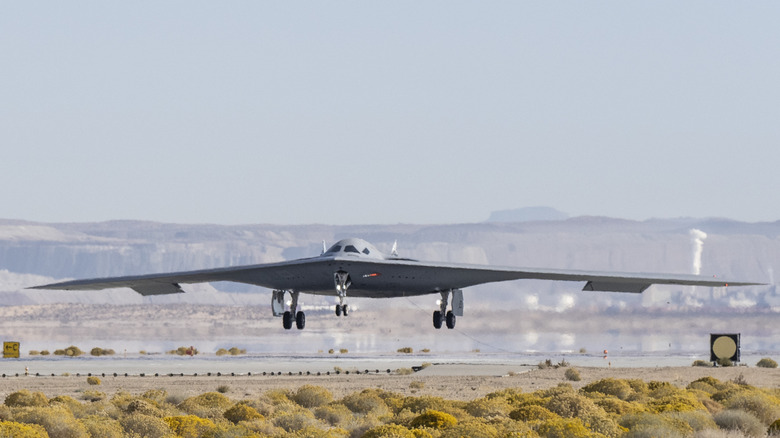B-21 Vs. B-2: What's The Difference Between These US Stealth Bombers?
Despite such similar names, there are fundamental differences between the United States Air Force's (USAF) B-2 and forthcoming B-21 bombers. At first glance, the two bombers seem very much alike. Both are stealth aircraft based on the flying wing type design, and both are designed by the brilliant people at Northrop Grumman. However, dig a little deeper and there are plenty of differences between the two aircraft. But first, let's look at the similarities between the two formidable planes and the design decisions behind them.
The B-21's development was based on a "low-risk" approach. In essence, this means the plane is more of an evolution of the existing B-2 platform than a radical departure from technologies that are already proven. This methodology goes a long way to explaining why the planes look so similar. As to be expected with such programs, the USAF remains tight-lipped about much of the B-21's design and capabilities, but there are some available facts and figures that we can look at.
The most obvious difference between the two craft is their size. Northrop Grumman's B-2 Spirit stealth bomber is a larger beast than its younger sibling with a wingspan of 172 feet and a maximum take-off weight (MTOW) of 336,500 pounds. By comparison, the B-21 has an projected wingspan of about 140 feet and an estimated MTOW of between 225,000 and 260,000 pounds. While this is one of the defining differences between the two planes, it isn't the only one.
Differences between the B-21 and B-2 bombers
The B-21 Raider (the aircraft name honors the Doolittle raid of World War 2) is a sixth-generation plane that incorporates the latest advancements in stealth and low-observability technologies. Since the introduction of the B-2 in 1988, stealth technology in military aircraft has progressed. However, there is a lot of secrecy surrounding the finer details about these advancements. Northrop Grumman simply says "...next-gen stealth and advancements in low observable processes will make the aircraft easier and less costly to maintain than prior systems."
The B-2 program was notoriously over-budget , further setting the B-21 apart from its predecessor. The cost per unit in 1998 was $1.157 billion, when adjusted to 2024 dollars, each B-2 Spirit cost the USAF $2.23 billion. Whereas the B-21 is on track to meet its unit cost of $550 million (roughly $807 million today). The number of engines is also a significant difference. The B-2 Spirit is powered by four GE F118 turbofan engines, while the B-21 only has two engines. The B-21's twin engines are still a mystery but are believed to be either Pratt & Whitney's PW9000 or its F135 engine .
Internally, there are also differences between the planes, with the B-21 being designed with an "Open Architecture" stance that allows it to be rapidly upgraded to meet evolving threats. Finally, we can look at payloads, with the B-21 believed to have a payload of around 30,000 pounds compared to the B-2 with a capacity of upwards of 40,000 pounds.
When will the B-21 see active service?
The Air Force has been conducting B-21 test flights since late 2023 and awarded a second low-rate initial production lot to Northrop Grumman in 2024's fourth quarter. Rep. Don Bacon from Nebraska's 2nd Congressional District and member of the House Armed Services Committee reported on X, "I received a briefing on the new B-21 Bomber program. It is being built ahead of schedule and on budget. It will be a game changer for USAF for decades," a rarity for a next-generation military aircraft.
That's a promising sign for a project this ambitious, especially as the U.S. Air Force plans to acquire at least 100 B-21s. In contrast, the Air Force originally intended to purchase 132 B-2 Spirits, but only 21 were ultimately built due to cost overruns and shifting defense priorities.
As for when the B-21 will officially enter service, the timeline is still unclear. Estimates vary, with some placing its first operational missions as early as the late 2020s, while others suggest it could be closer to the early 2030s. With its test flights underway and production ahead of schedule, the actual date we can expect to see it enter service remains a mystery. Some might say that it's a stealthy approach!


